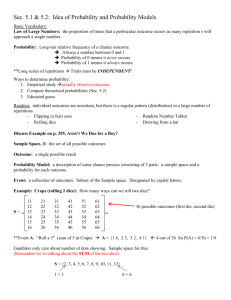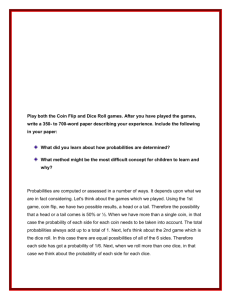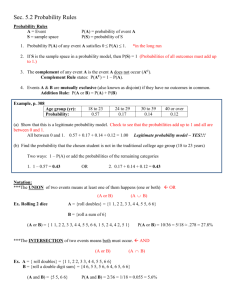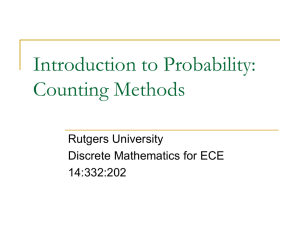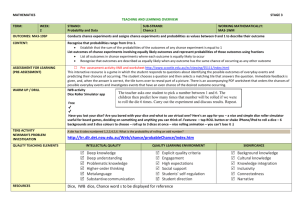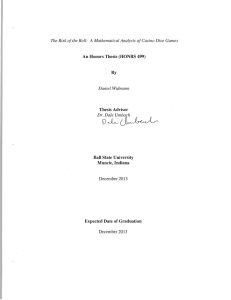Project 3: Estimating Probabilities Associated with Craps
advertisement
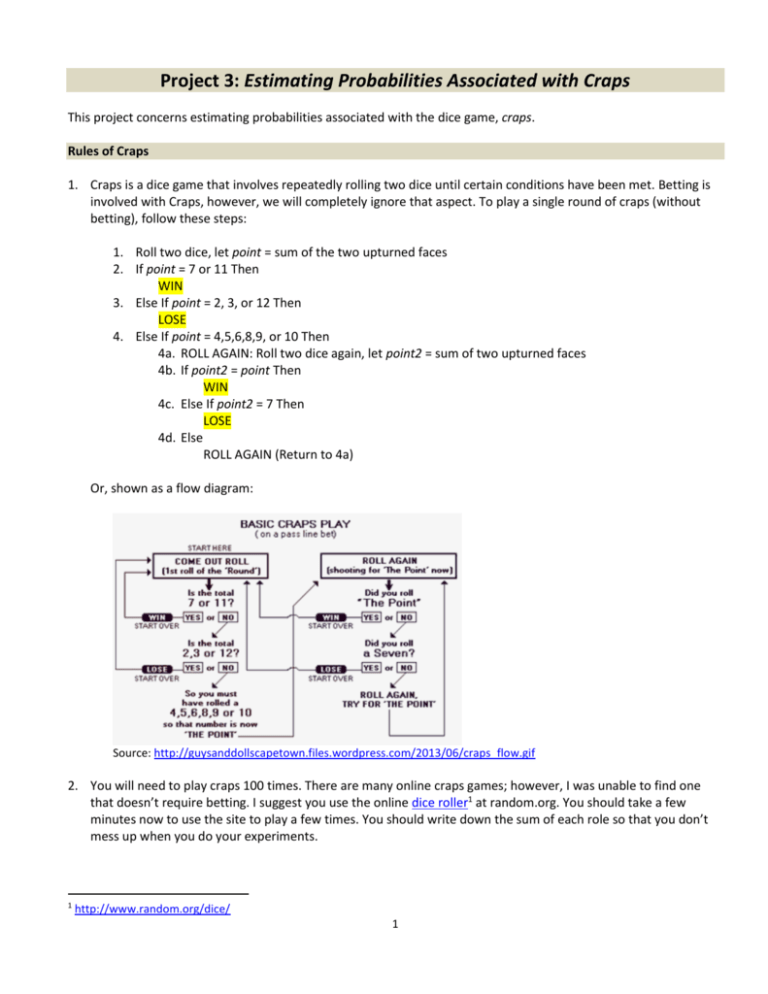
Project 3: Estimating Probabilities Associated with Craps This project concerns estimating probabilities associated with the dice game, craps. Rules of Craps 1. Craps is a dice game that involves repeatedly rolling two dice until certain conditions have been met. Betting is involved with Craps, however, we will completely ignore that aspect. To play a single round of craps (without betting), follow these steps: 1. Roll two dice, let point = sum of the two upturned faces 2. If point = 7 or 11 Then WIN 3. Else If point = 2, 3, or 12 Then LOSE 4. Else If point = 4,5,6,8,9, or 10 Then 4a. ROLL AGAIN: Roll two dice again, let point2 = sum of two upturned faces 4b. If point2 = point Then WIN 4c. Else If point2 = 7 Then LOSE 4d. Else ROLL AGAIN (Return to 4a) Or, shown as a flow diagram: Source: http://guysanddollscapetown.files.wordpress.com/2013/06/craps_flow.gif 2. You will need to play craps 100 times. There are many online craps games; however, I was unable to find one that doesn’t require betting. I suggest you use the online dice roller1 at random.org. You should take a few minutes now to use the site to play a few times. You should write down the sum of each role so that you don’t mess up when you do your experiments. 1 http://www.random.org/dice/ 1 3. You should review: discrete probability distribution estimating probabilities empirically expected value and standard deviation Project Requirements To fulfill the requirements below, you will need to play craps at least 100 times. I suggest that you read all 5 requirements, decide how many of these you will do, then think carefully about what data you need to record each time you play the game. 1. (30 points) Empirically determine the probability distribution of winning and losing at craps. Do: Play craps at least 100 times (dice roller2). Tally the outcomes Turn in: a nicely formatted table showing the outcomes (Win, Lose), the corresponding frequencies, and estimated probabilities. 2. (30 points) Empirically determine the probability distribution of these four events: Winning on the first roll, Losing on the first roll, Winning on the second or greater roll, Losing on the second or greater roll. Provide your summary data in a nicely formatted table. Turn in: a. A nicely formatted table showing the four outcomes, the corresponding frequencies, and estimated probabilities. b. A bar graph showing the outcomes and the probabilities. 3. (15 points) Use the internet to find the true probabilities for the probability distributions from 1 and 2 above. Compare to the values from 1. Cite your source. Turn in: Add a column to the table from requirement 1 to record the true probabilities. Cite your source. 4. (10 points) Empirically estimate the expected value for the number of rolls involved in playing a single round of craps. Also estimate the standard deviation. Turn in: The 100+ data values, the average and standard deviation. 5. (5 points) Empirically determine the probability distribution of the number of rolls required to play a single round of craps. Technically, the random variable can take on an infinite number of values (e.g. 1,2,…), though larger values are not very likely. Turn in: a. A nicely formatted table showing the different values you observed, the corresponding frequencies, and the estimated probabilities. In other words, don’t show values that didn’t occur. b. A bar graph showing the outcomes and the probabilities. 2 http://www.random.org/dice/ 2 Submission Requirements One person from each group submit a neatly formatted Word or pdf document to Blazeview in this format: Project 3 Name(s): 1. 2. 3. 4. 5. 3
